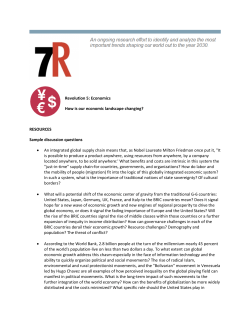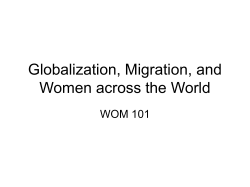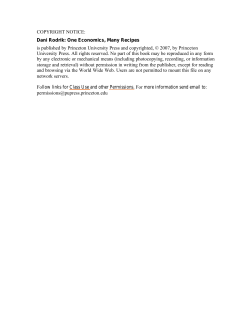
Chapter 8 Organization Structure and Control Systems PowerPoint by
Chapter 8 Organization Structure and Control Systems PowerPoint by Kristopher Blanchard North Central University Organizational Structure There is no permanent organization chart for the world. . . . It is of supreme importance to be ready at all times to take advantage of new opportunities. —Robert C. Goizueta, (Former) Chairman and Ceo, Coca-Cola Company Evolution and Change in MNC Internationalization is the process by which a firm gradually changes in response to international competition, domestic market saturation, and the desire for expansion, new markets, and diversification. Structural Evolution (Stages Model) occurs when managers redesign the organizational structure to optimize the strategy’s changes to work, making changes in the firm’s tasks and relationships and designating authority, responsibility, lines of communication, geographic dispersal of units and so forth Typical ways that firms organize international activities Domestic structure plus export department Domestic structure plus foreign subsidiary International division Global functional structure Global product structure Global Geographic Structure Integrated Global Structures The global functional structure is designed on the basis of the company’s functions – production, marketing, finance, and so forth. Foreign operations are integrated into the activities and responsibilities of each department to gain functional specialization and economies of scale. Matrix Structure is a hybrid organization of overlapping responsibilities – it is used by some firms but has generally fallen into disfavor recently Organizing for Globalization If you misjudge the market [by globalizing], you are wrong in 15 countries rather than only in one. —Ford European Executive Organizing for Globalization Two opposing forces in structural decisions – The need for differentiation (focusing on and specializing in specific markets) – The need for integration (coordinating those same markets) Globalization – a specific strategy that treats the world as one market by using a standardized approach to products and markets Organizing for Globalization Organizing to facilitate a globalization strategy typically involves rationalization and the development of strategic alliances Organizing for global product standardization necessitates close coordination among the various countries involved The problem facing companies in the future is that the structurally sophisticated global networks leave the organization exposed to the risk of environmental volatility from all corners of the world Comparative Management Focus: Chinese Global Network The Chinese commonwealth is a form of global network that has become the envy of Western multinationals – Network of entrepreneurial relationships in Asia primarily – Includes mainland China, 1.3 billion citizens, and more than 55 million Chinese in Taiwan, Indonesia, Hong Kong, and Thailand – Estimated to control $2 Trillion in liquid assets Comparative Management Focus: Chinese Global Network Most observers believe that this China-based informal economy is the world leader in economic growth, industrial expansion, and exports Comprises most mid-sized, family-run firms linked by transnational network channels Channels move information, finance, goods, and capital Network alliances bind together and draw from the substantial pool of financial capital and resources available in the region Emergent Structural Forms Inter-organizational networks The global e-corporation network structure The transnational corporation (TNC) network structure Organizational Change and Design When does a company need to make a change in organizational structure? – – – – – – Makes a change in goals or strategy Makes a change in scope of operations Indications of organizational inefficiency Conflicts among divisions and subsidiaries Overlapping responsibilities Complaints regarding customer service Organizational Change and Design Control Systems for Global Operations The establishment of a single currency makes it possible, for the first time, to establish shared, centralized accounting and administrative systems. —Francesco Caio, CEO, Merloni Elettrodomestici Monitoring Systems Direct Coordinating Mechanisms Design of appropriate structures Use of effective staffing practices Visits by head-office personnel Regular meetings In-Direct Coordinating Mechanisms Sales quotas Budgets Other financial tools Feedback reports Appropriateness of Monitoring and Reporting Systems Factors likely to affect the appropriateness of monitoring systems include: – Management practices – Local constraints – Expectations regarding: Authority, Time, and Communication Managing Effective Monitoring Systems In deciding on appropriate monitoring and reporting systems, additional factors to be considered include: • The role of information systems (adequacy of management information systems in foreign affiliates, noncomparability of performance data across countries) • Evaluation variables across countries Looking Ahead Chapter 9 – Staffing, Training, and Compensation for Global Operations – – – – – Staffing philosophies for global operations Global selection Training and development Compensating expatriates Compensating HCNs
© Copyright 2025





















